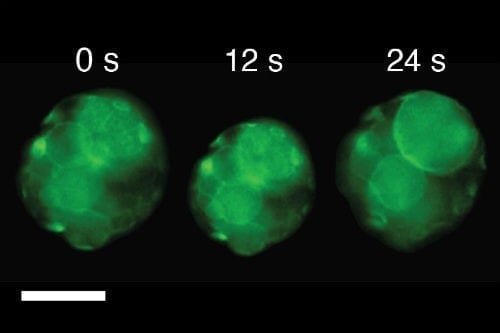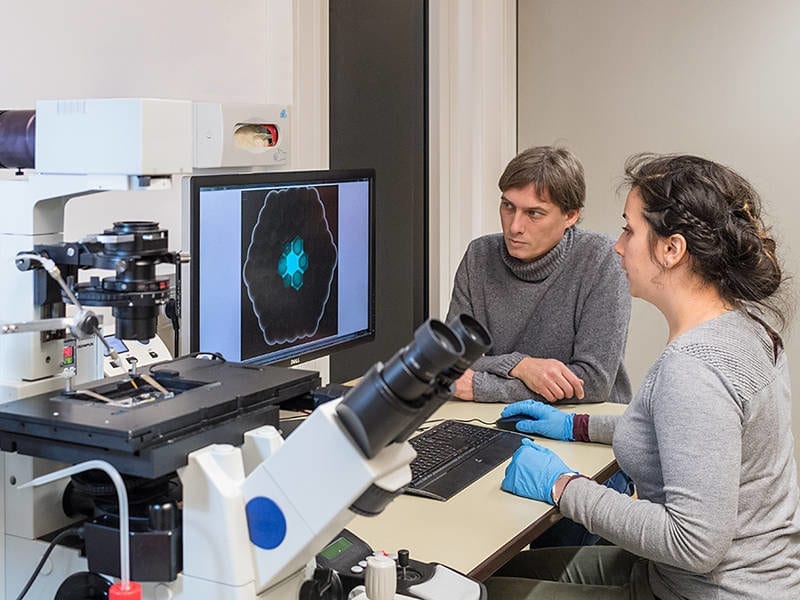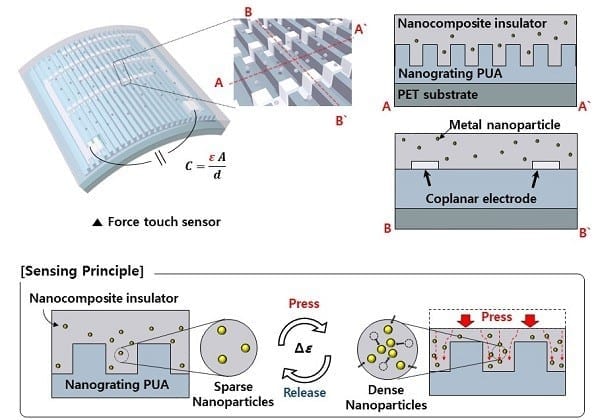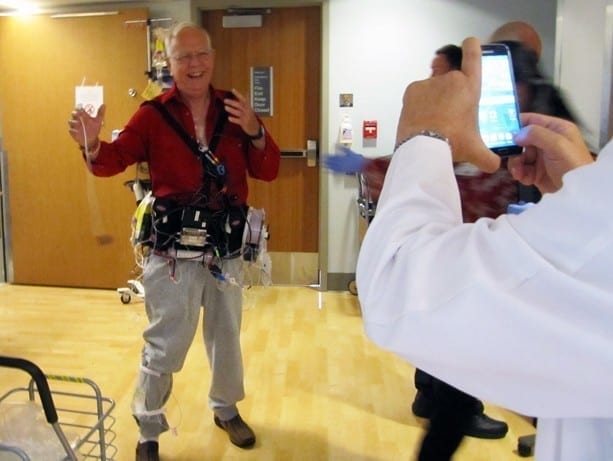
Credit: Dr Pierangelo Gobbo, University of Bristol
A tissue-like material capable of synchronised beating when heated and cooled has been developed by a team of University of Bristol chemists.
The discovery, published in Nature Materials, is the first chemically programmed approach to producing an artificial tissue. The findings, which could have major health applications in the future, could see chemically programmed synthetic tissue being used to support failing living tissues and to cure specific diseases.
The development of synthetic tissue which can mimic the ability of living cells to produce functions such as beating and chemical detoxification has, until now, remained a major synthetic biology challenge.
A team, led by Professor Stephen Mann FRS and Dr Pierangelo Gobbo from Bristol’s School of Chemistry, chemically programmed artificial synthetic cells known as protocells to communicate and interact with each other in a highly co-ordinated way.
The researchers constructed two types of artificial cells each having a protein-polymer membrane but with complementary surface anchoring groups. The team then assembled a mixture of the sticky artificial cells into chemically-linked clusters to produce self-supporting artificial tissue spheroids. By using a polymer that could expand or contract as the temperature was changed below or above 37 ?C, it was possible to make the artificial tissues undergo sustained beat-like oscillations in size.
The team was able to increase the functionality of the artificial tissues by capturing enzymes within their constituent artificial cells. Using various combinations of enzymes, the team was able to modulate the amplitude of the beating and control the movement of chemical signals in and out of the artificial tissues.
Professor Stephen Mann FRS, Professor of Chemistry at Bristol and lead author, said: “Our approach to the rational design and fabrication of prototissues bridges an important gap in bottom-up synthetic biology and should also contribute to the development of new bioinspired materials that work at the interface between living tissues and their synthetic counterparts.”
Dr Pierangelo Gobbo, lead author, added: “Our methodology opens up a route from the synthetic construction of individual protocells to the co-assembly and spatial integration of multi-protocellular structures. In this way, we can combine the specialisation of individual protocell types with the collective properties of the ensemble.”
Learn more: Scientists create synthetic prototissue capable of synchronised beating
The Latest on: Artificial tissue
[google_news title=”” keyword=”artificial tissue” num_posts=”10″ blurb_length=”0″ show_thumb=”left”]
via Google News
The Latest on: Artificial tissue
- Héma-Québec to become exclusive provider of human tissue donations for hospitalson April 26, 2024 at 3:35 pm
In addition to having a monopoly on blood products in the province, Héma-Québec will soon be solely responsible for the distribution of human tissues for all hospitals in Quebec starting December 2024 ...
- Could AI Help Catch Breast Cancers That Mammograms Miss?on April 25, 2024 at 8:50 pm
Artificial intelligence has reached mammograms. AI mammograms may help improve doctors' ability to detect more breast cancers. But there are drawbacks.
- Microscopic Colitison April 25, 2024 at 2:29 pm
Microscopic colitis is inflammation of the colon's lining that causes chronic watery diarrhea. Thankfully, there are effective treatments available.
- Advances in mammography among Breast Cancer Update topicson April 24, 2024 at 11:30 am
Advances in breast scanning, include the use of artificial intelligence, are on the agenda for the annual Delaware Breast Cancer Coalition update, ...
- Scientists create artificial cells with capabilities for biomedical advancementson April 24, 2024 at 2:39 am
Researchers at the University of North Carolina , have successfully created artificial cells capable of mimicking natural cellular behaviour ...
- Researchers create artificial cells that act like living cellson April 23, 2024 at 12:19 pm
Researchers describe the steps they took to manipulate DNA and proteins -- essential building blocks of life -- to create cells that look and act like cells from the body. This accomplishment, a first ...
- Google's growth plans aren't so 'hunky-dory' anymore, search boss sayson April 23, 2024 at 10:44 am
It’s a new world with the advent of artificial intelligence and its offshoots, and Google is putting the pedal to the metal to try to keep up.
- Artificial blood: Life saving scienceon April 19, 2024 at 11:52 am
We have traveled to Mars, made working artificial hearts, explored the deepest depths of the Mariana Trench, and sequenced the human genome, and yet, we haven’t been able to make artificial blood. Why ...
- The first blueprint for building an artificial ovaryon April 17, 2024 at 9:31 am
Researchers have created an atlas of the human ovary with cell-level resolution, the first step in developing an artificial ovary.
via Bing News










